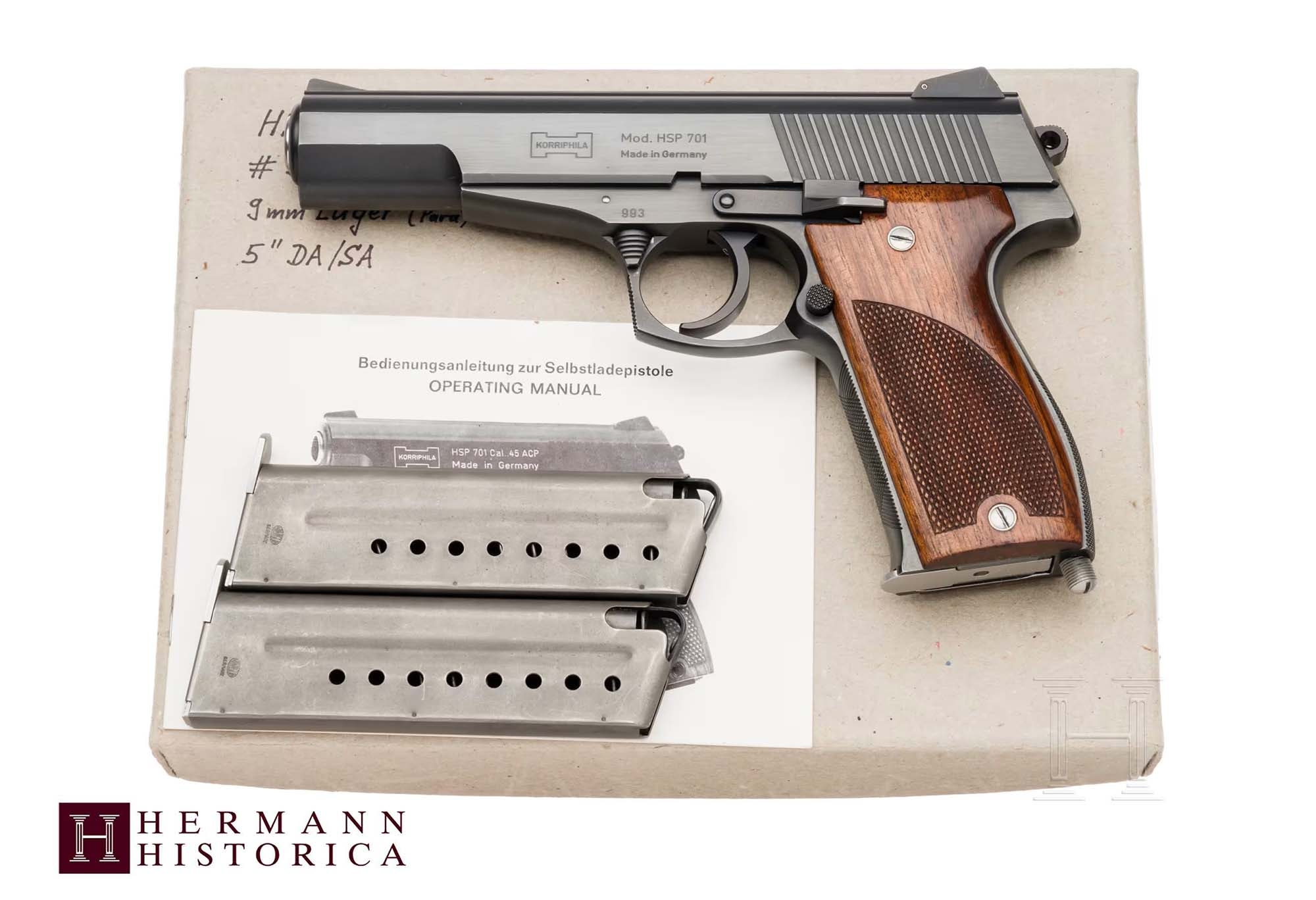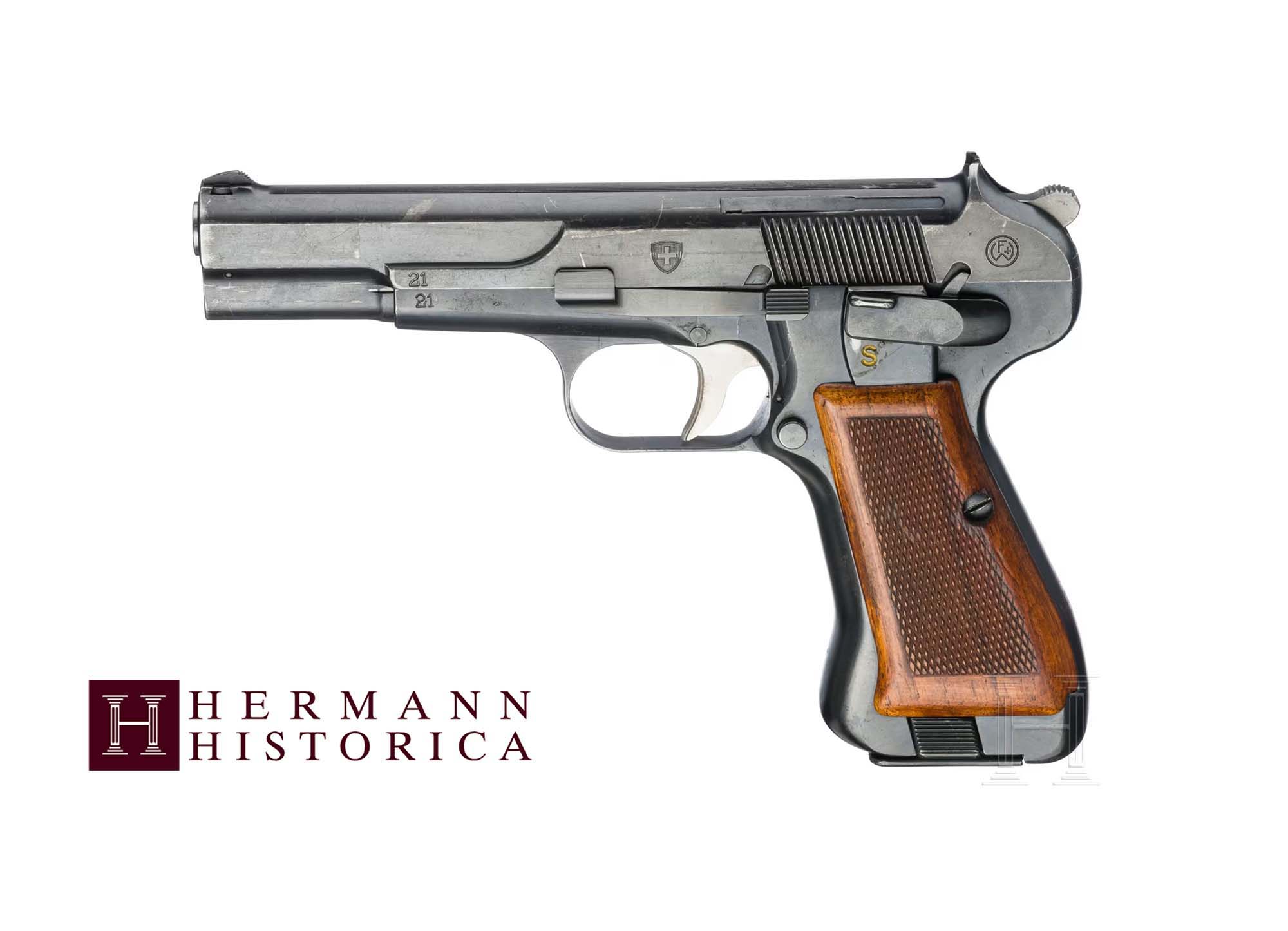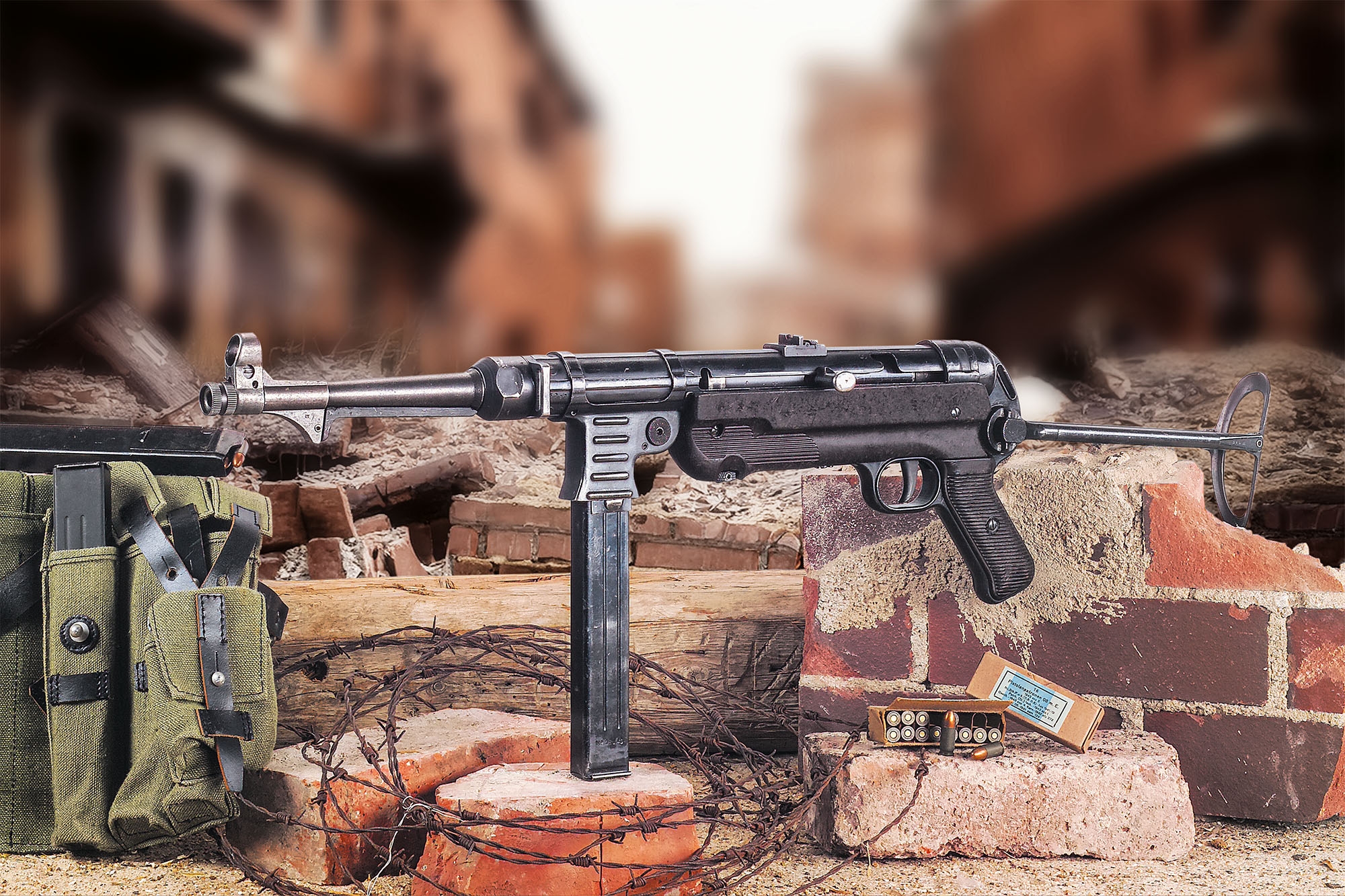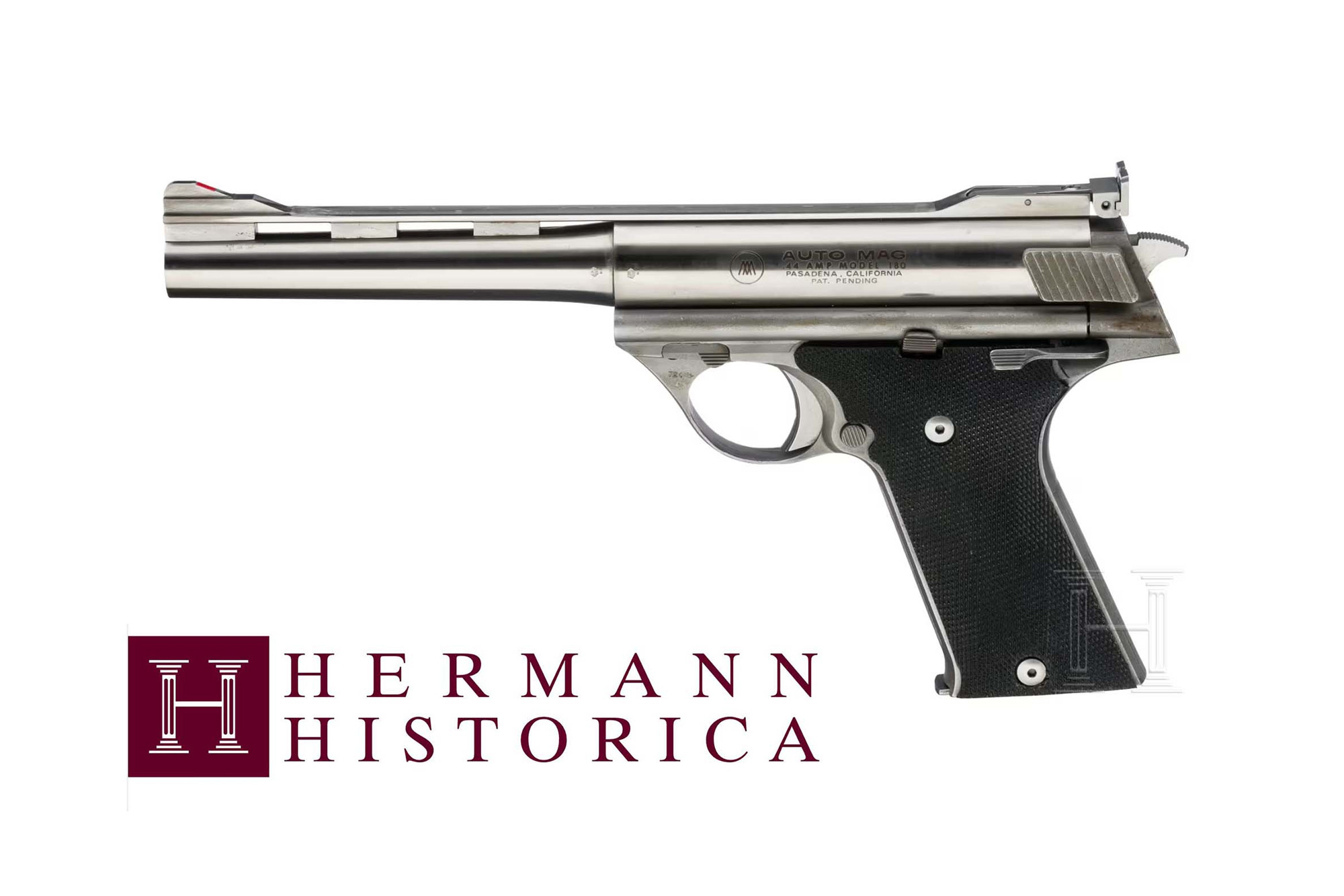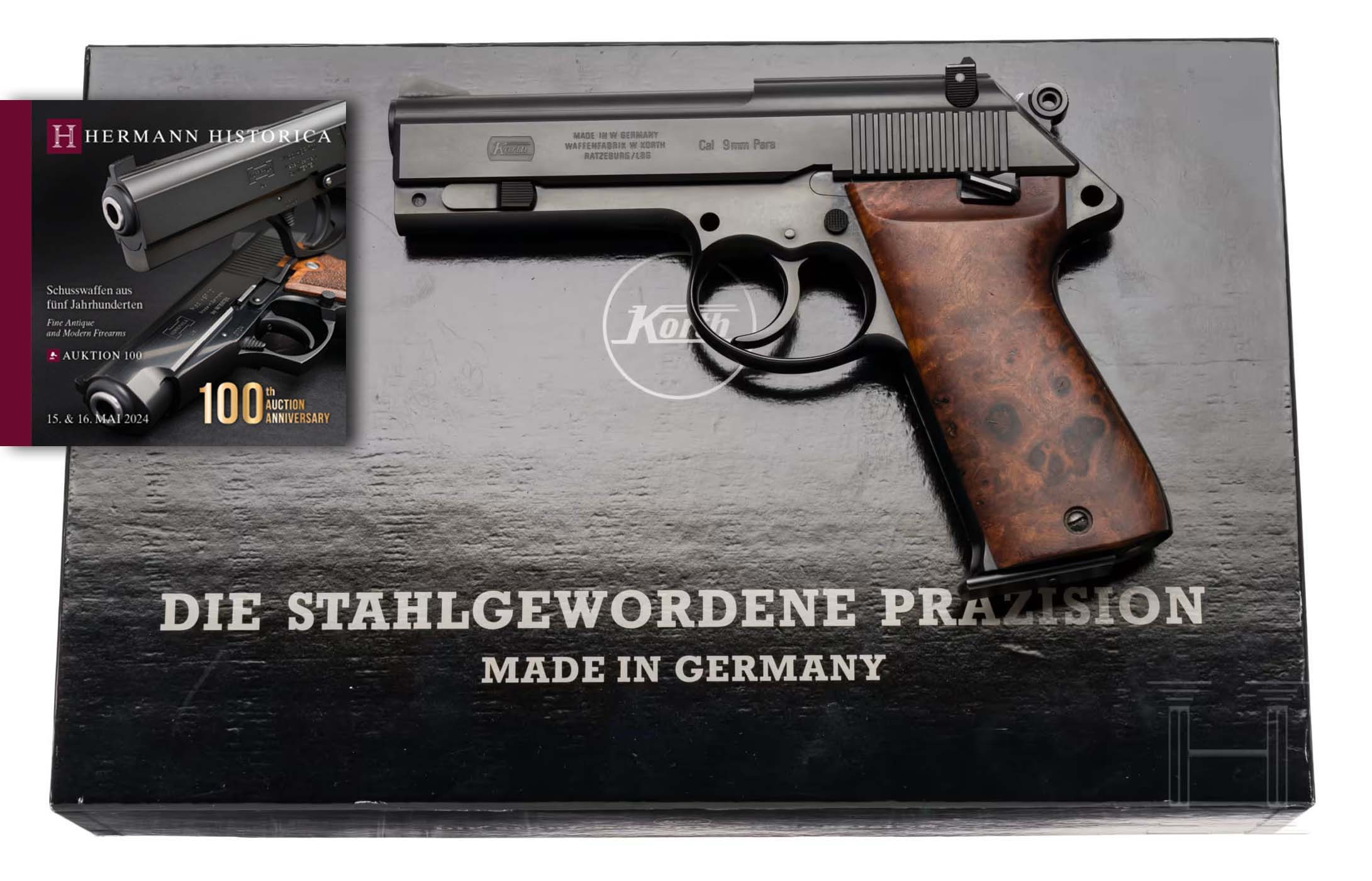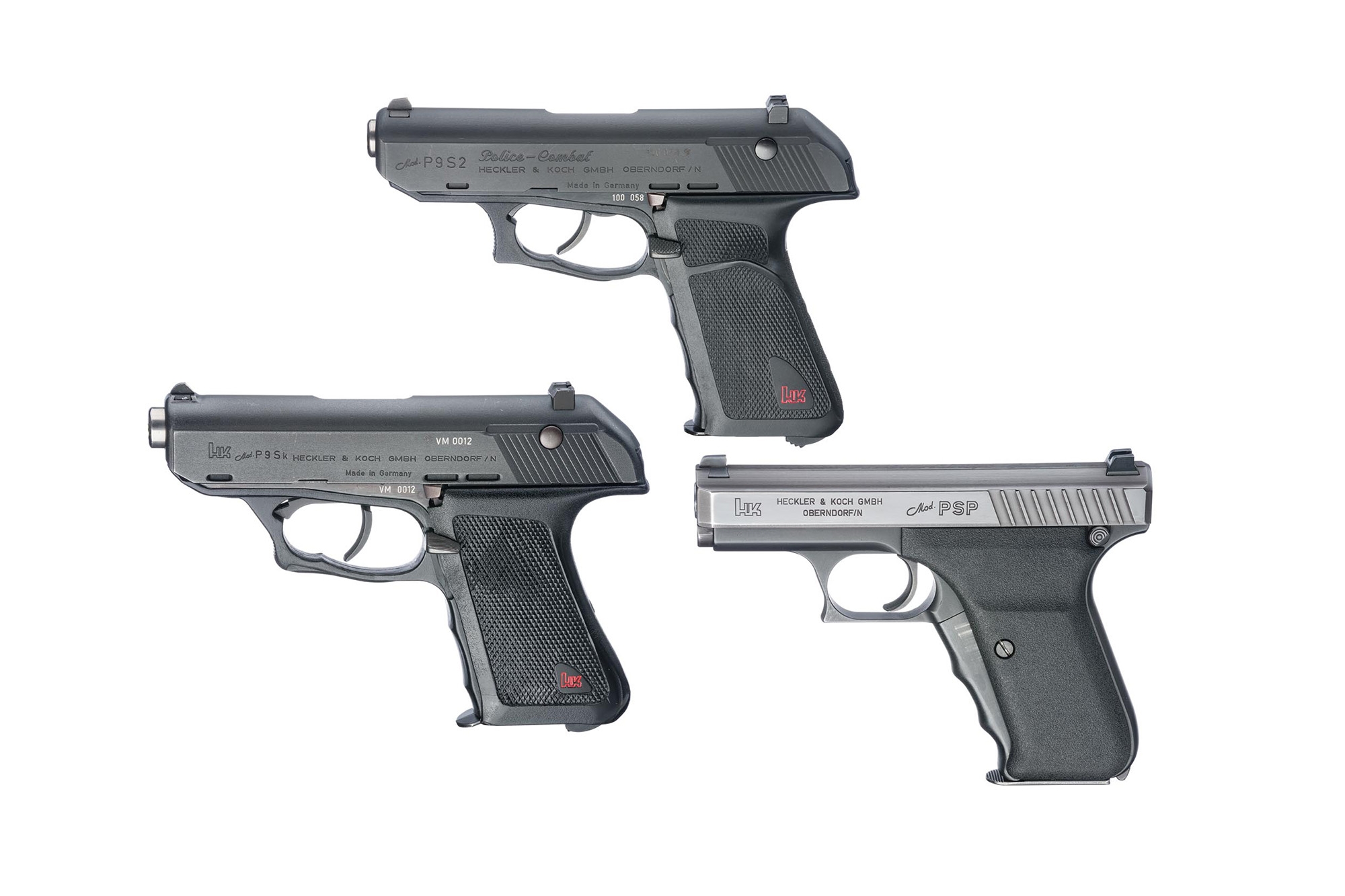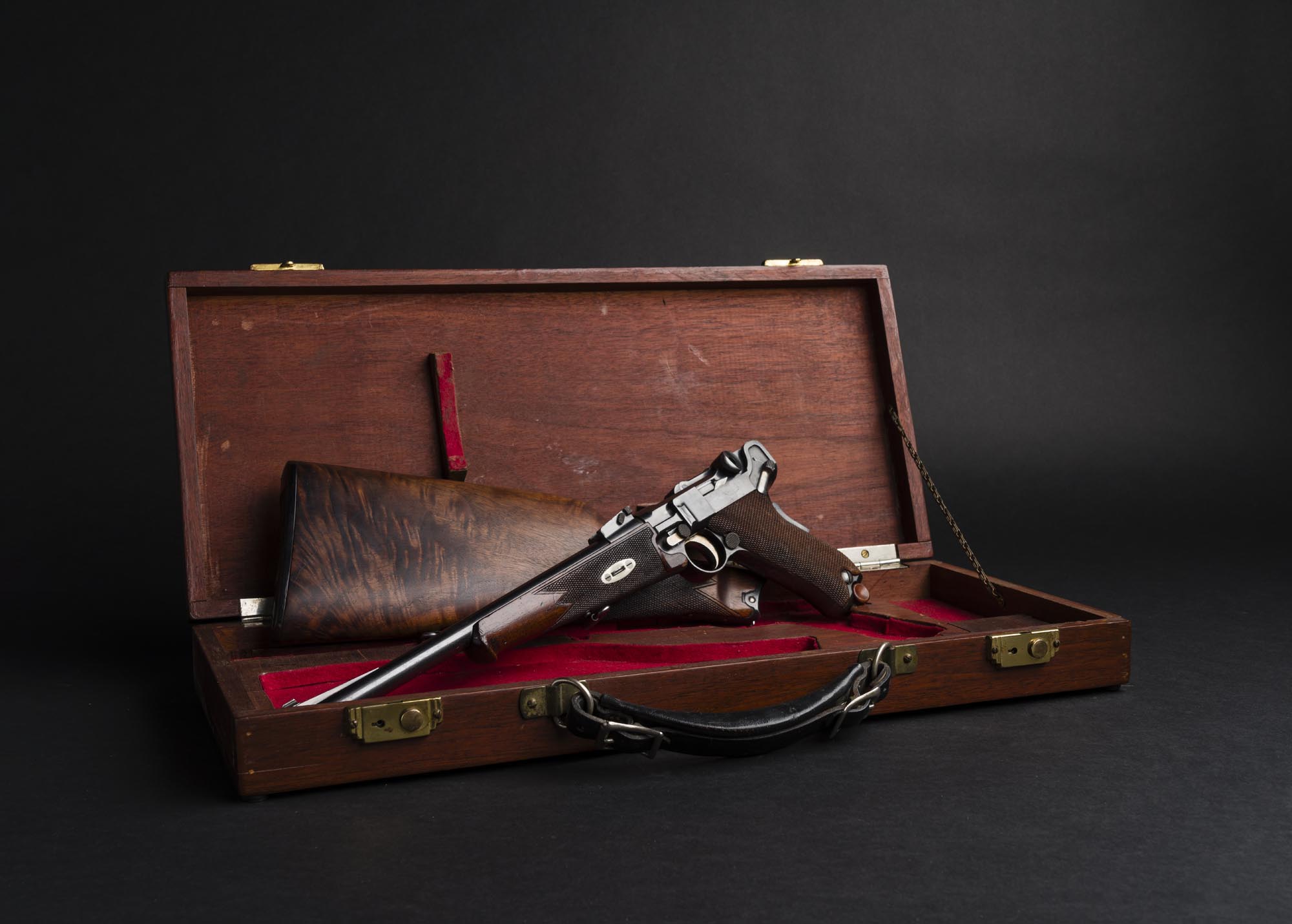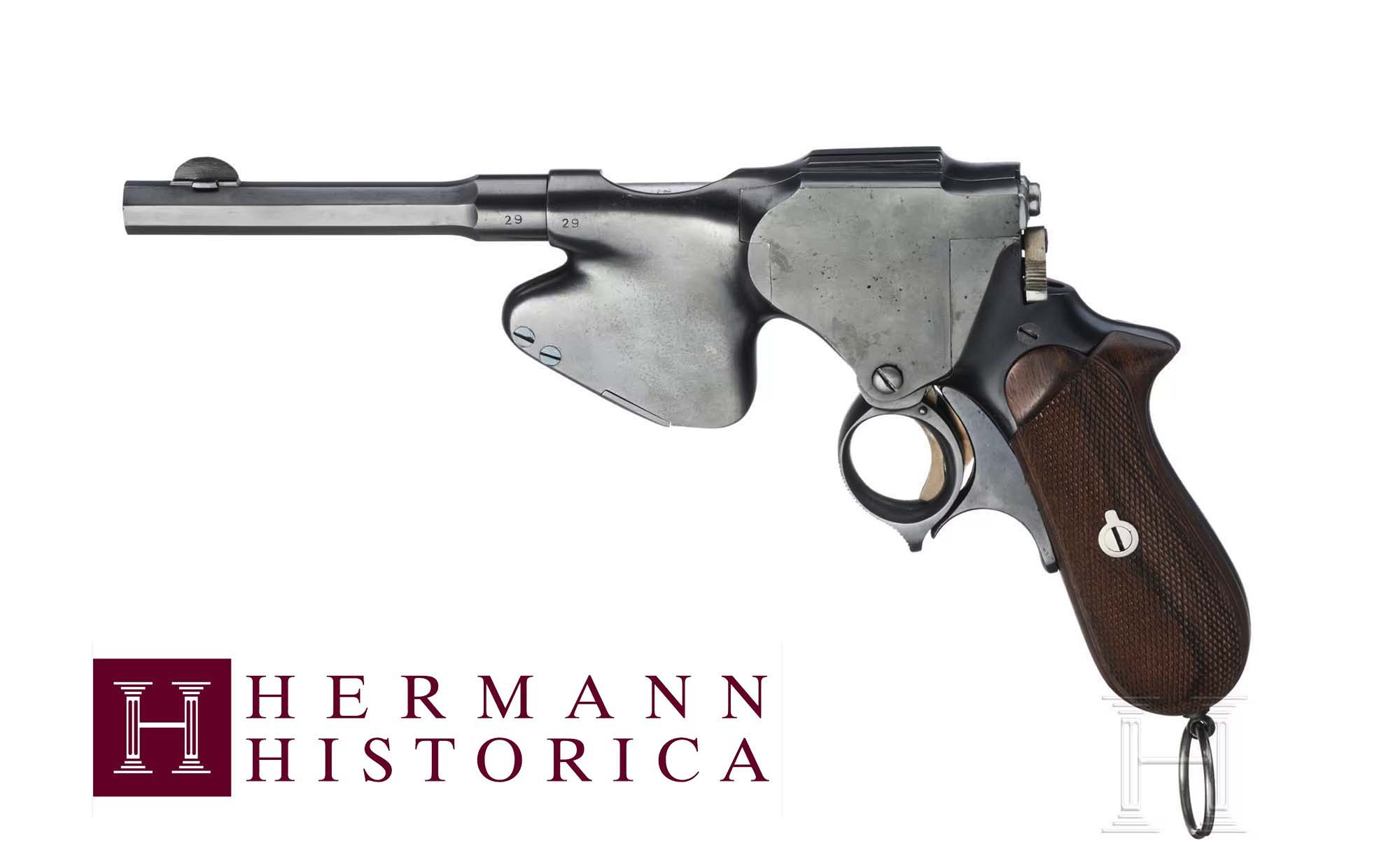From July 10 to 11, the "Fine Antique and Modern Firearms" online auction organised by the Hermann Historica specialised auction house took place. We had already given you some advance information on the most promising or sought-after pieces auctioned during the 101st edition and now it is time to see how the sale went.
Hermann Historica Auction No. 101, between Wild West and Old Europe
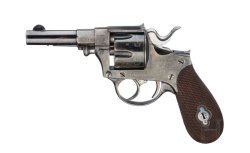
Lot 11401 was a Reichsrevolver M 83 Dreyse revolver in a compact version, i.e. with a barrel length of only 86 millimetres. This was a civilian version of the last revolver adopted by the German army, in this case chambered in .380 Short (instead of the military standard calibre, which was 10.6x25) and with a consistent serial number 539, which is also shown in abbreviated form on some of the screws that fasten the side plate and yoke to the frame.
Within a short time, bids for this revolver in good condition reached euro 1,600, more than four times the starting price.
The bidder who won lot number 11314, a Winchester Model 1866 carbine made in 1877 that we presented to you in our preview indicating it as a very promising piece, certainly got a great deal. The "Yellow Boy" carbine for sale at Hermann Historica has a round barrel chambered in .44 Henry, a beautiful period patina and on the left side of the receiver features a ring for attaching the gun to the horse's saddle. The stock is made of walnut, with a brass buttplate. The carbine bears the signs of time but is nevertheless in good condition. Collectors wasted no time and raised the final price to 2,700 euros.

Let's stay on the subject of rifles that made the history of the West: lot 12669 is one of the fastest guns of its time, the Colt Lightning pump-action rifle, here in the "Medium Frame" version in 44-40 WCF, with serial number 7212, which dates its production to 1885. The octagonal section barrel measures 64 centimetres in length while the tubular magazine, which reaches up to the muzzle, has a capacity of 12 cartridges. Original finish with some signs of wear and use. Walnut stock with signs of age and use, partially dented. Mechanically in sound condition, on the left side of the receiver it features Colt's legendary prancing horse. Although less iconic than the lever action rifle, the pump-action rifle was an equally popular and widespread weapon in the days of the conquest of the West, as the lucky man who decided to take it home for the reasonable sum of 2,100 euros knows well.

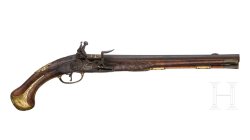
Let's go back more than a century and move to the Old Continent for lot 11077, a German flintlock pistol built around 1730 by the Munich gunsmith Christoph Joseph Frey. This German craftsman built pistols and rifles of excellent quality and was declared court gunsmith by the Electoral Prince of Bavaria in 1746. Frey's pistol has a smoothbore Damascus barrel in 14-mm caliber with a silver mask sight, a finely engraved lock, and a gilt brass counter lock with a depiction of an equestrian battle. The stock is made of walnut wood with a horn tip. At the base of the barrel is the gold inlaid signature "C. Ios: Frey In Mynchen". This fine 18th century piece was also sold for 2.100 euros.
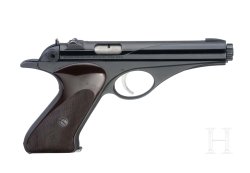
Vintage firearm of the 20th century also enjoyed success: such is the case with the .22 LR Whitney Wolverine semi-automatic pistol (lot 12152) complete with original box that brought down the auctioneer's hammer at the handsome sum of 2,600 euros. This curious gun with its almost space-like lines was produced in the USA by Whitney Firearms Inc. for only one year, from 1956 to 1957, and was one of the first civil guns to use aluminum investment cast components. The design was the brainchild of Robert Hillberg, who had worked in the aviation machine gun industry during the Second World War and worked for the gun manufacturer High Standard after the conflict. As is often the case with guns beloved by collectors, the reason for the Wolverine's rarity lies in its limited commercial success. About 13,000 examples were produced, mostly blued, but there are about a thousand with a nickel-plated finish and white plastic grips, obviously even rarer. The example auctioned by the Bavarian house belongs to the most widespread version, with blued finish and brown plastic grips; it has serial number 30830 and bears the hallmark of GECO, which was responsible for its distribution in Germany. It comes complete with original cardboard box, instruction booklet and 10-round magazine.
The sale continues on the Hermann Historica website
It is worth mentioning that the post-auction sale, which offers the possibility to buy unsold lots at the starting price (plus seller's commission) has already started on the website of the Bavarian auction house and will run online until August 31, 2024. In this way, collectors who were not able to participate in the sale even after the time limit and will still have the opportunity to observe, study and purchase the many pieces rich in history offered for sale by the Bavarian auction house.
To find out more, visit the Hermann Historica website.



